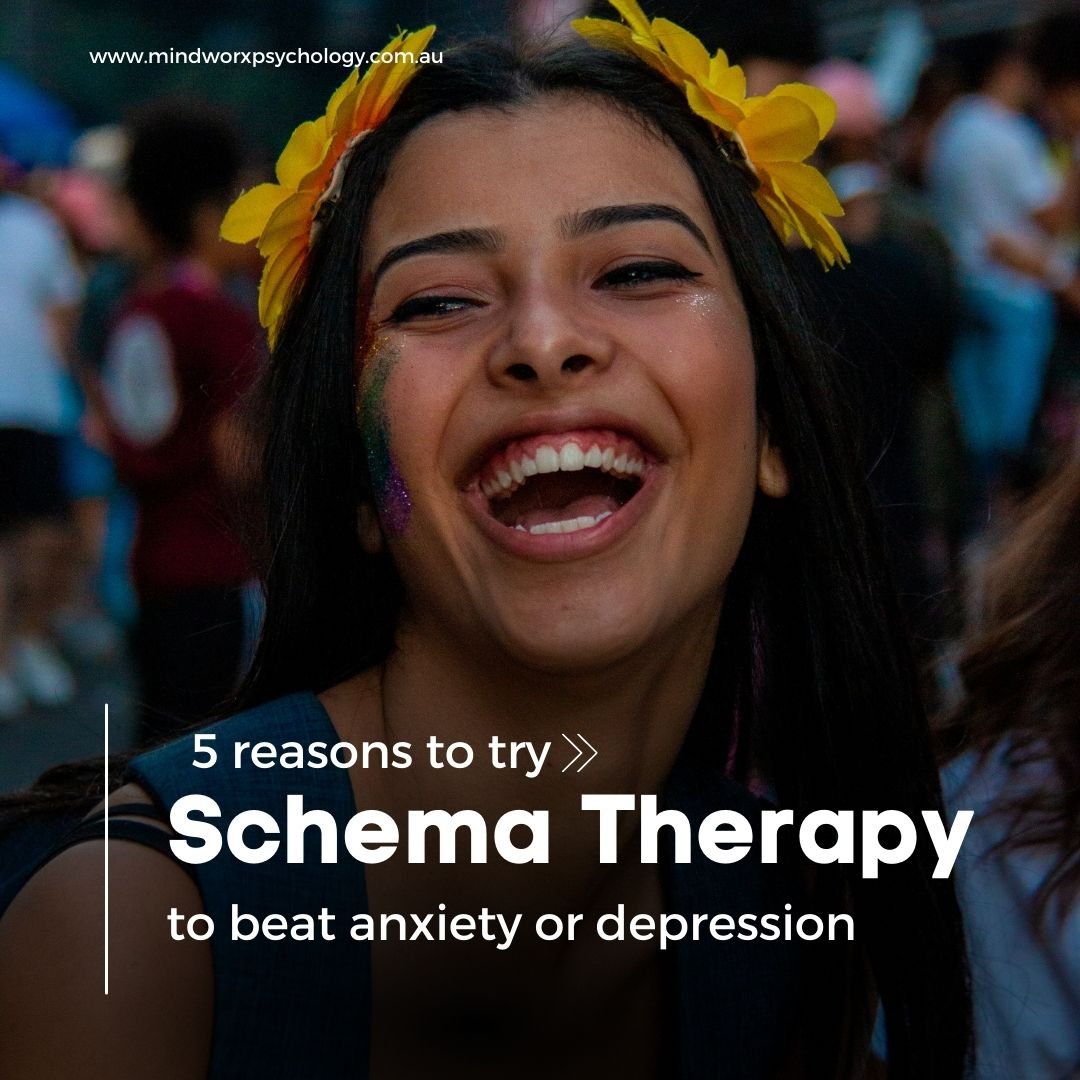Five ways schema therapy can help beat Anxiety and Depression
Five ways that Schema Therapy can help people with Anxiety and Depression to beat symptoms.
When we are looking to beat anxiety and depression, there are so many therapeutic approaches, how can we decide which one to pick? One approach that many of our clients find helpful is schema therapy. It offers a compassionate, comprehensive, and integrative therapeutic approach to mental health treatment. For those with anxiety and depression, schema therapy is a beacon of hope and a potent tool for fostering mental health and resilience.
What is Schema Therapy?
Before delving into its benefits, it’s important to understand what schema therapy is. Schema therapy is an innovative psychotherapy developed by Dr. Jeffrey Young that integrates elements from cognitive behavioural therapy, attachment theory, Gestalt therapy, and psycho-dynamic thinking.
The therapy focuses on identifying and changing maladaptive schemas, or life patterns, that individuals develop in childhood and continue into adulthood, often leading to mental health disorders such as anxiety and depression.
Unraveling Childhood Patterns
One of the central tenets of schema therapy is that many mental health issues are rooted in childhood experiences. These experiences, often linked with unmet emotional needs, evolve into maladaptive schemas. Schema therapy helps individuals unearth these patterns, understand their origins, and ultimately change the way they affect their present lives.
For those suffering from anxiety and depression, this can be profoundly impactful. Through this therapeutic approach, patients can gain insight into why they might feel an overwhelming sense of worry, sadness, or hopelessness, connecting these feelings back to their underlying schemas.
Let’s use Emma as an example. Emma grew up with parents who were often absent, due to work and personal issues. They were inconsistent in showing up for her, both physically and emotionally. Emma’s emotional needs, such as needing reassurance, love, and support, were frequently unmet. This resulted in her developing an unconscious abandonment schema, an enduring pattern that encompasses her fears and feelings of instability, insecurity, and the belief that she will be left alone.
Fast forward to Emma’s adult life, her abandonment schema is deeply ingrained. She finds herself attracted to relationships that replicate the instability she experienced in her childhood. For instance, she finds herself drawn to partners who are emotionally unavailable or inconsistent, further perpetuating her feelings of abandonment. It also manifests in her day-to-day life, causing her anxiety when people are late or don’t respond to her messages quickly, fearing they are leaving her.
Schema therapy can help Emma unearth these patterns. Through therapy, she can identify the connection between her childhood experiences, her adult reactions, and her fears. It can help her understand that her fear of abandonment, while valid given her past, doesn’t have to dictate her future.
As Emma continues with schema therapy, she will learn to challenge the maladaptive beliefs and coping mechanisms tied to her abandonment schema. This might include re-framing her thoughts about abandonment, developing new, healthier relationships, and learning coping strategies to manage her fears and anxiety.
As she works through this, she will gradually change how the abandonment schema impacts her life, ultimately enabling her to establish more secure and fulfilling relationships and decrease her anxiety levels.
Emotion-focused Approach
A second cornerstone of schema therapy is its strong emphasis on the emotional experience of individuals. It encourages emotional awareness, expression, and regulation, offering an emotion-focused approach, which is particularly beneficial for those with anxiety and depression.
By fostering emotional understanding, individuals can better identify their emotional triggers and learn to manage their reactions. For instance, someone struggling with anxiety may learn to anticipate when feelings of panic are about to arise and employ strategies to prevent these emotions from spiraling out of control.
 Building a Secure Attachment
Building a Secure Attachment
The therapeutic relationship is central to schema therapy, and the third way it brings benefits.
The therapist assumes the role of a secure attachment figure, offering a safe and supportive space for the individual to explore their feelings, thoughts, and behaviours. For those with anxiety and depression, the therapist’s consistent presence can act as an anchor, alleviating their feelings of isolation and vulnerability.
Comprehensive and Long-lasting Change
Schema therapy doesn’t just alleviate symptoms; it aims to bring about long-lasting change by addressing the root causes of mental health issues. It focuses on changing the maladaptive schemas, thus reducing the likelihood of relapse. This emphasis on deep, fundamental change is a particular strength of schema therapy for those suffering from chronic or recurrent anxiety and depression.
Empowerment through Strategies
Schema therapy arms individuals with a host of strategies and tools to manage their symptoms. Techniques such as imagery rescripting, schema mode dialogues, and emotion-focused techniques offer practical ways to counteract feelings of anxiety and depression. These methods can be empowering, providing a sense of control over mental health. For our clients, learning skills for life is one of the biggest benefits of schema therapy for anxiety and depression.
At Mindworx Psychology, we draw from schema therapy because it represents a powerful approach to managing and overcoming anxiety and depression. Its focus on childhood patterns, emotional understanding, building secure attachments, and imparting strategies offers hope for those struggling with these conditions.
While it doesn’t promise a quick fix, its commitment to comprehensive and long-lasting change is precisely what makes it an effective tool in the journey towards mental health resilience.
With schema therapy, individuals can unravel their maladaptive schemas, improve relationships and reclaim control of their mental well-being.
For many of our clients, an eclectic, tailored mix of CBT (cognitive behavioural therapy) and schema therapy is exactly what they need.
Ready for change? We are ready to help.
about author

Dr Amanda Mullin, Founder of Mindworx Psychology & Doctor of Clinical Psychology
subscribe to newsletter
Keep up to date with the latest in evidence based treatments

